Following the advent of the powerful idols, bunny servers emerged from seemingly out of nowhere. The tight knit team of girls from the Rabbit House burst into the metagame, disrupting the balance of the game with a simple question of “Coffee or Green Tea?”.

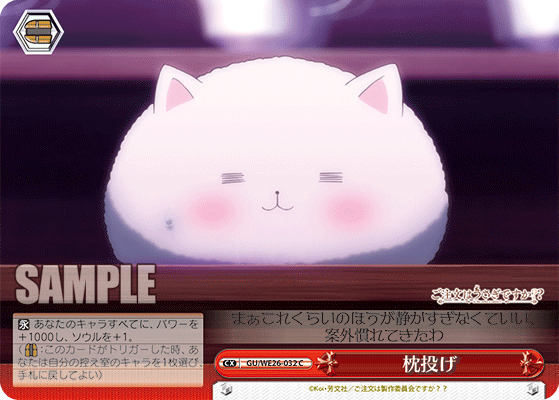
The finisher for the Rabbit House deck was a terrifying finisher with three different instances of damage stacked on itself. Its attack was also completely non-interactive, meaning backups could not be used to defend against Chino and Cocoa’s onslaught. Compared to Yami a few years back, Chino and Cocoa dealt straight damage to your opponent, not requiring their climaxes to be cancelled out. Ideally with this finisher, you would be hard pushing for your opponent’s death. Furthermore, the card was extremely big, making it difficult for any defensive fields to protect themselves from its swing.
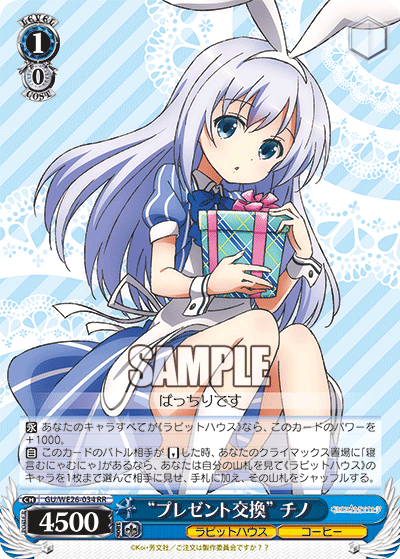

Similar to other decks at the time, the Rabbit House deck was rocking out your standard 1/0 5500 Shimakaze profile. However, another benefit of this deck’s “Shimakaze” was its combo with that of an arc trigger. With both the arc and gate triggers for the deck, that meant that any trigger usually guaranteed some form of hand.
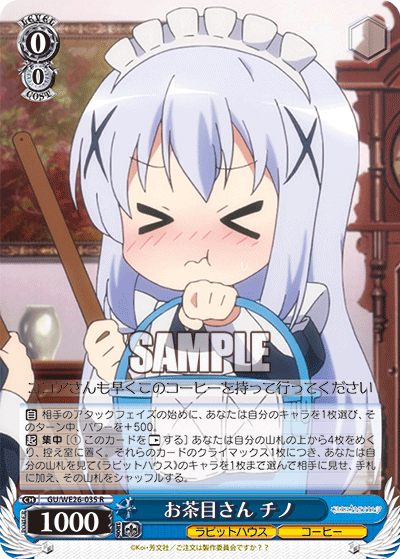
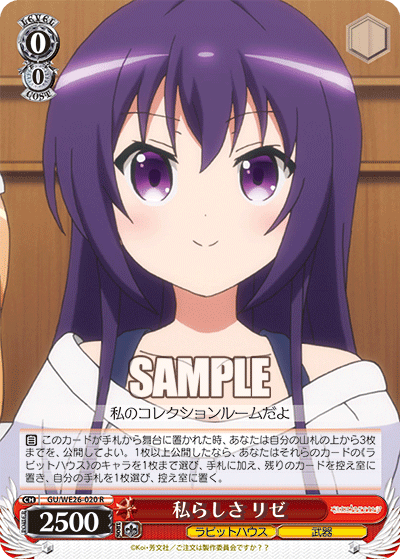
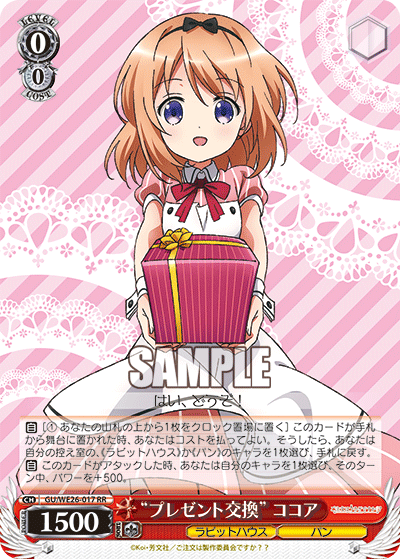
GU/WE26-020R 私らしさ リゼ (center)
GU/WE26-017RR “プレゼント交換” ココア (right)
Newer profiles were being added to the game at the time of the deck’s release. Older profiles that were beneficial re-emerged as well. Tap-self brainstorms were also beginning to be part of the norm that was expected in decks. This released a lot of pressure of having to require a secondary back row for the brainstorm effect. Riki remerged, helping decks become more consistent in fetching their combos and other pieces for the early game.
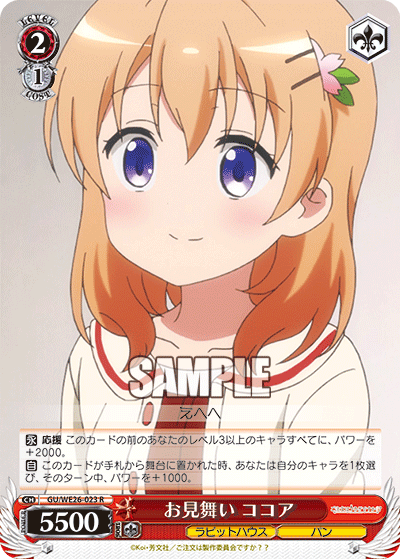
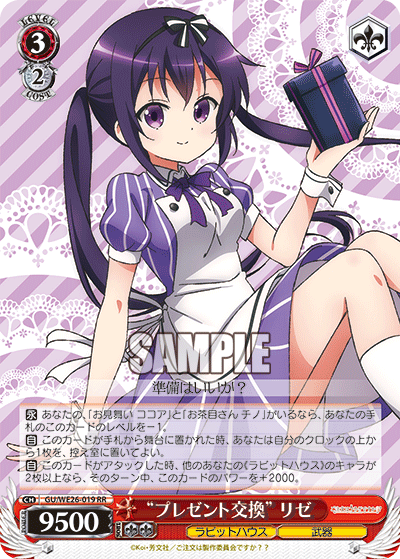
As a way to advance the game, easier and better conditions for early plays were introduced. The pairing above was a great powerhouse for the deck, ensuring that the Rize would always be 11500 power at the very least while supported by the Cocoa.

One other card that gave the deck a distinction from all the rest lay in the Cocoa above. Whereas most anti-changes still occurred in the later stages of the game, the deck had its anti-early play answer quite early on. Cocoa could simply swap an opposing character to a lower leveled character while sacking field to deny any reversing effects. Its cost was extremely cheap and efficient.
An emerging trend was growing with even more powerful individual cards with strong abilities with less reliance on other cards. Finishers were growing capable of finishing the game on their own in an efficient way without other supportive requirements. Staples were becoming far more common place, particularly in the level 0 slots. And so begs the question: Coffee or Green Tea?